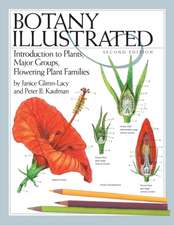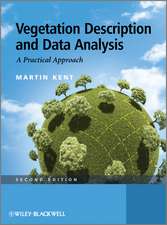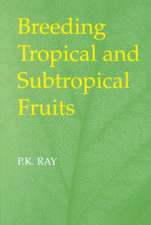Historical Ecology of the British Flora
Autor M. Ingrouilleen Limba Engleză Paperback – 31 mai 1995
Preț: 648.56 lei
Preț vechi: 763.01 lei
-15% Nou
Puncte Express: 973
Preț estimativ în valută:
124.11€ • 132.71$ • 103.47£
124.11€ • 132.71$ • 103.47£
Carte tipărită la comandă
Livrare economică 18 aprilie-02 mai
Preluare comenzi: 021 569.72.76
Specificații
ISBN-13: 9780412561504
ISBN-10: 0412561506
Pagini: 352
Ilustrații: XII, 352 p.
Dimensiuni: 178 x 254 x 20 mm
Greutate: 0.64 kg
Ediția:1995
Editura: SPRINGER NETHERLANDS
Colecția Springer
Locul publicării:Dordrecht, Netherlands
ISBN-10: 0412561506
Pagini: 352
Ilustrații: XII, 352 p.
Dimensiuni: 178 x 254 x 20 mm
Greutate: 0.64 kg
Ediția:1995
Editura: SPRINGER NETHERLANDS
Colecția Springer
Locul publicării:Dordrecht, Netherlands
Public țintă
ResearchCuprins
1 The fossil flora: 440 million to 14 thousand years ago.- 1.1 Hard evidence from the past.- 1.2 The Silurian and Lower Devonian.- 1.3 The Middle and Upper Devonian.- 1.4 The Lower Carboniferous.- 1.5 The Upper Carboniferous.- 1.6 The Permian and Triassic.- 1.7 The Jurassic.- 1.8 The Cretaceous.- 1.9 Recognizing the past.- 1.10 Tertiary floras.- 1.11 The London Clay flora.- 1.12 Oligocene floras beside mountain lakes and streams.- 1.13 The Quaternary period.- 1.14 The Anglian glaciation.- 1.15 Late Pleistocene interglacials.- 1.16 The last cold stage, the Devensian stage.- 1.17 A relic glacial vegetation?.- 1.18 The ice melts.- 2 The ‘natural’ vegetation of the British Isles: 14 000 to 5000 years ago and its survival today.- 2.1 The Late Devensian.- 2.2 Plants, climate and soils.- 2.3 The Windermere and Woodgrange interstadials.- 2.4 A cold snap, the Loch Lomond and Nahanagan stadials.- 2.5 Postglacial warmth.- 2.6 A surviving herb flora.- 2.7 The spread of the wildwood.- 2.8 The wildwood, primary and ancient woodlands.- 2.9 The ecology of the wildwood.- 2.10 ‘Natural’ vegetation?.- 3 The managed landscape: fields, pastures, woods and gardens.- 3.1 The elm decline.- 3.2 Clearings in the wildwood.- 3.3 Marking out the land in the Bronze Age.- 3.4 Ownership, rights and duties.- 3.5 Exploiting the countryside.- 3.6 Evolution in our flora.- 3.7 The exotic flora.- References.
Recenzii
In short, the book provides an essential explanation of the diversity of today's vegetation and landscape - Neu!; The book is written in an easy and accessible style..., anyone with a serious interest in the history and ecology of our flora and its conservation would do well to add this to their shelves - Natural World; This is the sort of book that everyone should be grateful to the author for producing. It covers an immense sweep of time and material, and a wide range of people from undergraduates and researchers to the 'educated layman (person)' will find it of great value. - Landscape History; ...such readability and authority that the book is hard to put down....The author is to be congratulated on producing such a comprehensive and accessible book. - Tree News.












